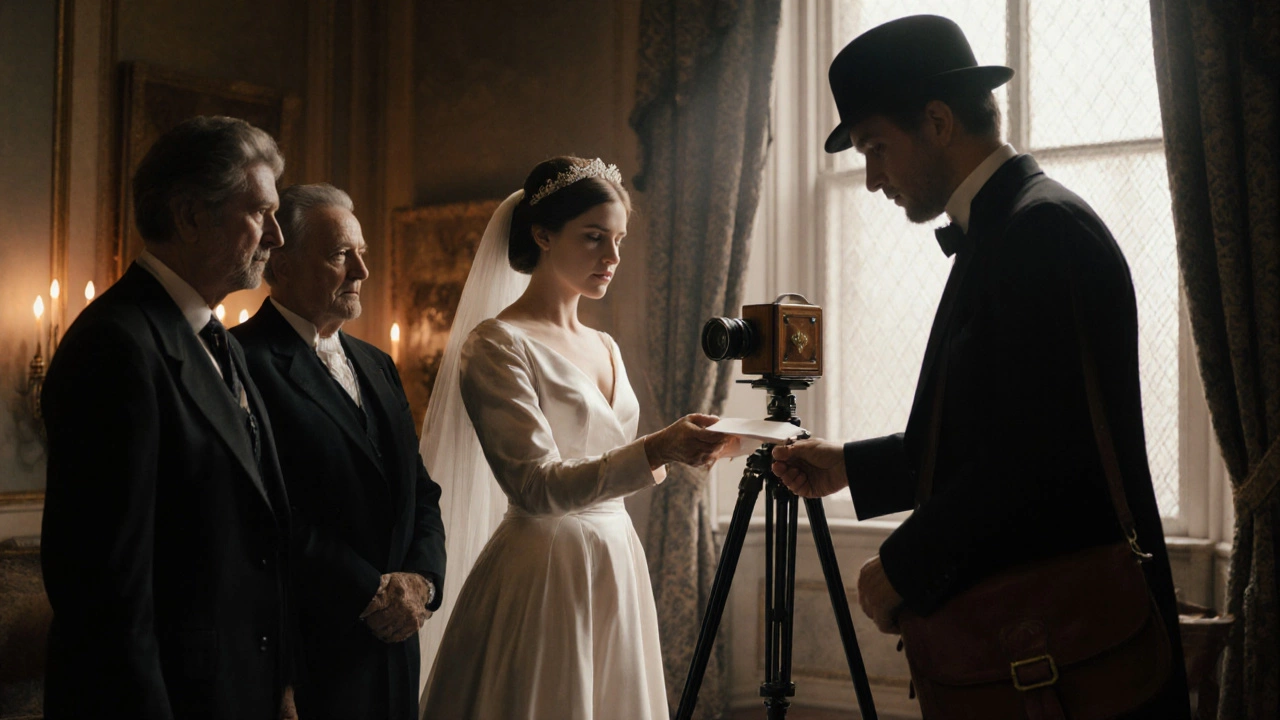Who Pays the Wedding Photographer? Traditional Guidelines & Modern Tips
 Oct, 11 2025
Oct, 11 2025
Wedding Photographer Cost Sharing Calculator
This calculator helps determine fair photographer cost splits based on regional norms and financial capabilities. Enter your budget details to get personalized recommendations.
Enter your details above to see a fair photographer cost split recommendation.
Key Takeaways
- Historically, the bride’s family covered the photographer in many cultures, but the trend is shifting toward shared responsibility.
- Regional customs vary: UK families often split costs, US families traditionally expect the bride’s side to pay, while Asian families may follow different norms.
- Assess your overall wedding budget first, then decide who can comfortably contribute to the photographer fee.
- Negotiating a clear contract protects both parties and prevents surprise expenses.
- When in doubt, discuss expectations openly with all parties involved.
When planning a wedding, wedding photographer is the professional hired to capture the ceremony, portraits, and reception moments. The question of who actually foots the bill can feel awkward, especially when families have different expectations. Below we break down the traditional roles, modern shifts, and practical steps to decide who should handle the wedding photographer payment without drama.
Understanding Traditional Norms
In many Western ceremonies, the bride's family has historically been seen as the primary sponsor for visual memories. This stems from the Victorian era, when the bride’s household organized most of the event details, from the dress to the venue, and the photographer was considered part of the “wedding trousseau”.
Conversely, some cultures view the groom's family as responsible for the photographer, especially when they are the ones providing the venue or catering. In Indian and Pakistani weddings, for example, the groom’s side often funds the elaborate photo shoots, while the bride’s side covers jewelry and attire.
These traditions were never set in stone, but they still influence expectations today. Knowing where your families come from helps you anticipate who might volunteer first.

Regional Variations in 2025
United Kingdom: Couples now tend to split photography costs evenly between both families, especially when the wedding is a joint family affair. A 2024 survey by the UK Wedding Industry Association found 48% of couples reported a 50/50 split, with the rest leaning toward the bride’s side (30%) or the groom’s side (22%).
United States: The classic norm still leans toward the bride’s family paying, but a growing number of couples are opting for a shared approach. In the US, the average photographer fee in 2024 was $2,800. When families discuss budgets, many use a “budget pool” where each side contributes a set percentage based on overall costs.
Asia: In countries like India, Pakistan, and Bangladesh, the groom’s side often takes the lead on photography because the pre‑wedding shoot (often a multi‑day event) is a major cultural showcase. In Japan, the couple themselves typically budget for photography, treating it as an investment in their shared memories.
Modern Shifts & Shared Costs
Younger couples are challenging old rules. With rising wedding expenses - the average UK wedding cost hit £30,000 in 2024 - many couples ask both families to contribute proportionally. This approach respects tradition while acknowledging financial reality.
Another trend is hiring a “photography package” that includes engagement sessions, album printing, and online galleries. When a package bundles services, it’s easier to allocate costs: the engagement shoot may be covered by the couple, while the main day’s fee is split.
If either side cannot afford their share, couples often turn to alternatives: a talented friend with a decent DSLR, a student photographer, or a smaller‑scale “hourly” coverage rather than a full‑day package.
Budgeting the Photographer
Before any conversation about who pays, understand the numbers. Here are the typical cost components you’ll encounter:
- Base day rate: $1,800‑$3,500, covering 8‑10 hours of shooting.
- Second shooter: $300‑$600, useful for larger venues.
- Post‑production editing: usually billed per image or flat rate ($400‑$800).
- Wedding album: $250‑$1,200 depending on size and paper quality.
- Travel & accommodation: varies; critical for destination weddings.
Ask for a detailed quote and a written photographer contract. This protects both parties and clarifies what’s included.

Practical Tips for Deciding Who Pays
- Start with the overall budget. If your total wedding budget is £30,000, allocate a realistic percentage (often 10‑12%) for photography.
- Check family expectations. Have a candid talk with parents early - ask who expects to contribute and how much.
- Match contributions to ability. If the bride’s family can comfortably cover £2,500 but the groom’s family is tighter, propose a 70/30 split.
- Consider a joint fund. Create a shared spreadsheet where each family adds what they can. This transparency reduces guesswork.
- Negotiate the package. If the photographer offers an “engagement + wedding” bundle, split the engagement portion between the couple and the day’s portion between families.
- Plan for contingencies. Set aside a small buffer (5% of the photography budget) for extra prints or unexpected travel.
By following these steps, you turn a potentially awkward question into a clear, cooperative plan.
Comparison Table: Traditional vs. Modern Payment Approaches
| Approach | Typical Payer(s) | Pros | Cons |
|---|---|---|---|
| Traditional Bride‑Family | Bride’s parents | Clear expectation; aligns with historic customs. | May strain finances if family budget is limited. |
| Traditional Groom‑Family | Groom’s parents | Works when groom’s side is financially stronger. | Can cause tension if not culturally expected. |
| Modern Shared Split | Both families (often 50/50) | Fair distribution; eases financial burden. | Requires open communication; possible misalignment. |
| Couple‑Funded | Couple themselves | Full control; fits minimalist budgets. | May reduce funds for other wedding elements. |
Frequently Asked Questions
Is it rude to ask parents who will pay for the photographer?
No. Discussing finances early shows respect for everyone’s budget and prevents misunderstandings later. Phrase it as a planning question rather than an accusation.
What if the photographer’s quote exceeds our total budget?
Consider scaling back: fewer hours, no second shooter, or a more modest album. You can also negotiate a custom package or look for emerging talent with lower rates.
Do I need to tip the wedding photographer?
Tipping isn’t mandatory, but a 10‑15% gratuity is appreciated, especially if the photographer went above and beyond or traveled far.
Can we pay the photographer in installments?
Many photographers offer a deposit (usually 30%) followed by a final payment a month before the wedding. Clarify this schedule in the contract.
What if the photographer cancels last minute?
A solid contract will include a cancellation clause and a backup plan or refund policy. Always verify the photographer’s insurance and backup crew availability.